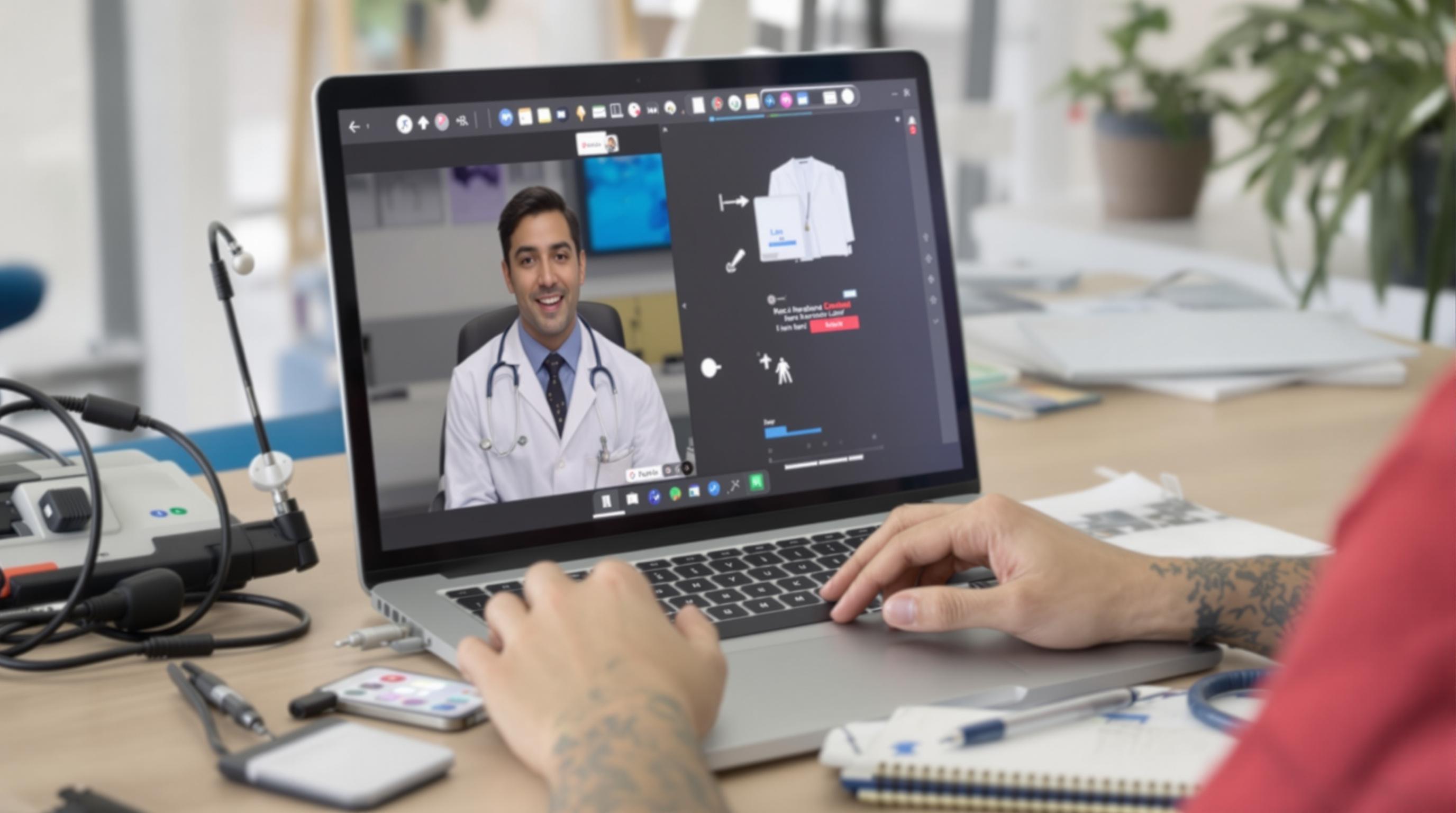Related Articles
- The Unexpected Impact of Environmental Factors on the Accuracy of Medication Dispensing Technologies
- Exploring the Influence of Mental Health Stigma on Accessibility and Affordability of Coverage in Modern Insurance Plans
- How Cloud Storage Quirks Are Quietly Complicating Patient Data Protection in Modern Healthcare Settings
- Top 6 Emerging Medical Billing Platforms Revolutionizing Practice Revenue Cycles Since 2019
- When Digital Distance Deepens Divide: Surprising Social Costs of Remote Health Services in Underserved Communities
- The Unexpected Role of EHR Usability in Physician Burnout and Strategies to Reclaim Workflow Balance
When Digital Distance Deepens Divide: Surprising Social Costs of Remote Health Services in Underserved Communities
When Digital Distance Deepens Divide: Surprising Social Costs of Remote Health Services in Underserved Communities
Remote health services have revolutionized care accessibility but often widen social divides in underserved communities, revealing unexpected social costs. This article explores how digital barriers, cultural disconnects, and economic disparities deepen health inequities despite technological progress.
By 2022, it was estimated that nearly 80% of healthcare providers in the U.S. had adopted some form of telehealth services—a rapid expansion fueled by the pandemic crisis and the promise of convenience. Yet, for many marginalized groups, this surge in digital health access translated less to empowerment and more to alienation. The lack of reliable internet, unfamiliarity with digital tools, and privacy concerns compounded the divide.
Digital Privilege vs. Digital Exclusion
Imagine a patient in a rural town attempting to join a video consultation, only to be frustrated repeatedly by dropped calls because of poor broadband infrastructure. While this sounds trivial to tech-savvy urbanites, it’s a harsh reality for millions. The Pew Research Center reported that about 37% of adults with household incomes below $30,000 do not own a smartphone, limiting their engagement with telemedicine.
Case Study: Remote Consultations in Appalachian Regions
Take the Appalachian Mountains, where chronic illnesses run high, but internet service is spotty at best. A regional health center implemented telehealth services during the pandemic, reporting an initial surge in usage. However, many patients in the area struggled with connection issues and digital literacy, leading to missed appointments and dissatisfaction. It was clear that deploying technology alone neglected the community’s specific socio-economic context.
“It’s like trying to build a bridge with no materials,”
said Dr. Helen Martinez, a public health expert working on digital equity programs. “Technology without infrastructure is just a mirage of progress.”
The Cultural Chasm in Remote Health
Beyond technology, there's a cultural and interpersonal gap widened by remote health solutions. Telehealth often reduces meaningful interaction, making it harder for providers to pick up on subtle emotional cues or language nuances critical for accurate diagnoses. In underserved communities, where mistrust toward the medical system is prevalent due to historical neglect or abuse, the reduction in face-to-face time can deepen suspicion.
Humorous but Tragic: The Virtual Doctor’s Visit
One anecdote recounted by a community health worker highlights a family trying to explain their child’s symptoms via three different devices with half the family juggling toddlers and pets. The chaotic environment ironically mirrors a sitcom but underlines the serious barriers—privacy concerns, distractions, and lack of dedicated space for health conversations.
Socioeconomic Tangled Web
Economically disadvantaged groups face a two-pronged challenge: limited access to devices and competing priorities such as job insecurity or childcare make attending scheduled virtual visits difficult. A 2021 JAMA study found that low-income patients were 40% less likely to complete telehealth appointments compared to their higher-income counterparts.
Policy Failures and Opportunities
Federal and state governments have pushed to expand telehealth coverage during the COVID-19 public health emergency, yet reimbursement policies often overlook underserved populations’ needs. Without targeted funding to enhance digital infrastructure, provide devices, and promote digital literacy, telemedicine risks becoming another system that mirrors existing inequalities.
A Story From the Ground: Maria’s Dilemma
Maria, a 54-year-old Latina living in an urban food desert, was diagnosed with diabetes last year. Her clinic switched to remote consultations, offering digital tools for glucose monitoring. But Maria, who works two jobs and shares a smartphone with her children, found it nearly impossible to keep up with the digital demands. Her health deteriorated as appointments slipped through the cracks, demonstrating how remote health, while promising convenience, can paradoxically deepen health risks without careful support.
Bridging the Gap
Community health initiatives have begun blending remote and in-person care to ensure no one is left behind. Mobile units with trained facilitators can help patients connect to telehealth or collect biometric data in safe, accessible environments. Such hybrid models offer a pragmatic pathway forward.
The Psychological Toll
It’s not just physical health at risk. The social isolation accompanying remote care can exacerbate mental health problems. A 2023 meta-analysis found that telehealth users in low-income communities reported feelings of loneliness and alienation more frequently than those receiving in-person care.
Conclusion: Technology is Not a Panacea
Ultimately, while digital health services hold immense potential, they are not a cure-all. Without addressing systemic infrastructure, cultural competence, and socioeconomic factors, telehealth threatens inadvertently to deepen the very social divides it aims to bridge.
Addressing these challenges demands a multifaceted approach—investment in broadband access, culturally sensitive care models, equitable reimbursement structures, and community-tailored solutions that respect and incorporate patients' realities. Only then can remote health realize its promise as a tool for inclusion rather than exclusion.
References:
Pew Research Center (2021). Mobile Fact Sheet.
JAMA Network Open (2021). Disparities in Telehealth Use.
Bashshur, R.L., et al. (2023). Telemedicine and Health Equity: A Meta-Analysis.
Martinez, H. (2023). Interview on Digital Health Equity Initiatives.
Written by Liam, 63, an experienced sports columnist turned health equity advocate targeting readers aged 16-70 who seek to understand how technological advances impact social justice and health outcomes.




